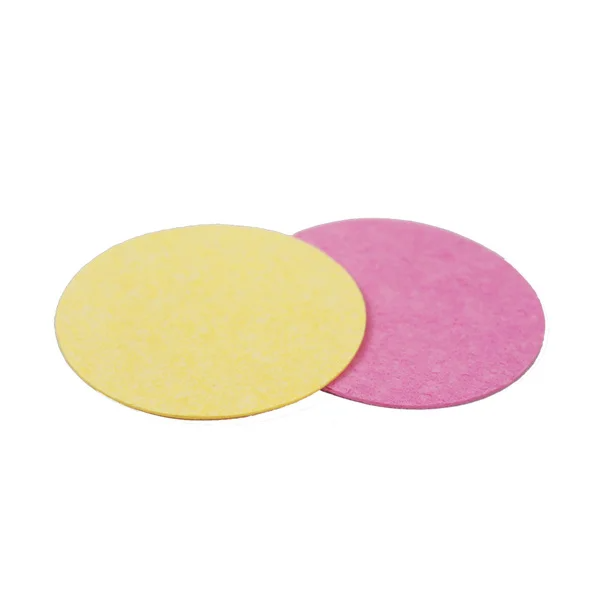- Full range of sponge products
The Pros and Cons of Cellulose Sponge and Polyurethane Sponge
What is Cellulose Sponge?
02/25/20235 Surprising Ways to Use a Makeup Sponge Besides Applying Foundation
05/18/2023In daily life, cellulose sponge and polyurethane sponge are used, so what is the difference between them before, and what are the different advantages and disadvantages?
What is cellulose sponge?
Cellulose sponge is a natural sponge made of wood pulp, which is processed into a soft, absorbent material. It can be compressed, also called compressed cellulose sponge, and there are 3m cellulose sponges if you divide it by length. It is biodegradable and friendly to the environment, making it a popular choice for environmentally conscious people. Cellulose sponges are also very affordable and can be purchased in most stores. They are great for cleaning up spills and wiping down surfaces, but they may not be as durable as other non-cellulose sponges.
What is a polyurethane sponge?
A polyurethane sponge is a synthetic sponge, made from a type of plastic. It is known for its durability and ability to withstand harsh chemicals and high temperatures. Polyurethane sponges are typically used in industrial settings, but they can also be used for home use. While they may be more expensive than cellulose sponges, they can last longer and provide better cleaning ability. However, they are not biodegradable and may not be the best choice for those who prioritize eco-
friendliness.
Advantages and disadvantages of cellulose sponges.
A cellulose sponge is a natural sponge made from wood pulp. It is commonly used in home and commercial settings. The following are some of the advantages and disadvantages of cellulose sponges:
Pros:
Highly absorbent: Cellulose sponges are able to hold large amounts of water or cleaning solutions, allowing them to wipe surfaces effectively.
Biodegradable: Unlike synthetic sponges, cellulose sponges are made from natural materials that are biodegradable, making them an environmentally friendly choice.
Versatile: Cellulose sponges can be used for a variety of cleaning tasks, including cleaning dishes, countertops and other household surfaces.
Disadvantages:
Prone to bacteria: Because cellulose sponges retain moisture, they can become a breeding ground for bacteria if not cleaned and replaced regularly.
Less durable: Cellulose sponges tend to wear out more quickly than synthetic sponges and may need to be replaced more frequently.
May scratch delicate surfaces: Some cellulose sponges have a rougher texture and may scratch delicate surfaces such as non-stick pans or high-gloss surfaces.
Advantages and disadvantages of polyurethane sponges.
A polyurethane (PU) sponge is a synthetic sponge made from a type of plastic. The following are some of the advantages and disadvantages of polyurethane sponges:
Pros:
Durable: Polyurethane sponges are more durable than cellulose sponges and can withstand more wear and tear, making them a longer lasting option.
Resistant to bacterial growth: Unlike cellulose sponges, polyurethane sponges are less likely to harbor bacteria due to their denser material and closed-cell structure.
Versatile: Polyurethane sponges can be used for a variety of cleaning tasks, including scrubbing, wiping and absorbing spills.
Disadvantages:
Poor Absorption: Polyurethane sponges may not be as absorbent as cellulose sponges, which may make them less effective for certain cleaning tasks.
Not biodegradable: Polyurethane sponges are made from synthetic materials and are not biodegradable, which means they can contribute to environmental waste.
May scratch surfaces: Some types of polyurethane sponges have a rough texture and may scratch delicate surfaces, so it’s important to choose the right sponge for the job.
Which sponge is right for you?
Choosing between cellulose and polyurethane sponges ultimately depends on your specific needs and preferences. If you prioritize durability and the ability to withstand harsh chemicals and high temperatures, polyurethane sponges may be a better choice for you. However, if you prioritize eco-friendliness and affordability, cellulose foam may be the choice for you. Consider your priorities and make an informed decision based on what’s most important to you.

